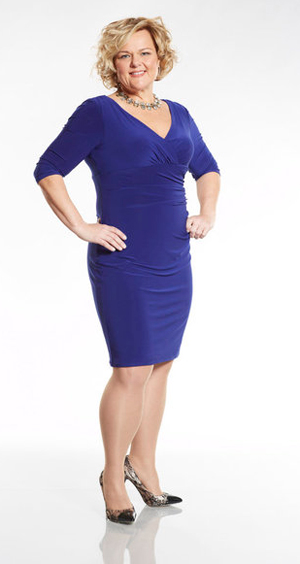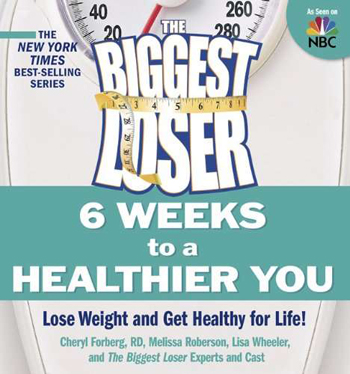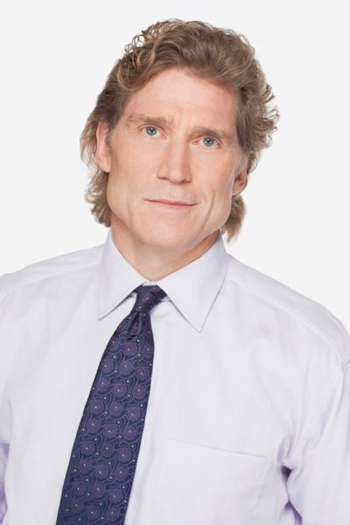Isn’t it a little bold to say you’re curing diabetes, was my first question for Biggest Loser’s Dr. Robert Huizenga, better known as Dr. H. He asserted that not only can it be done, but Biggest Loser is blazing the trail where curing diabetes is concerned. Yes, a reality show is doing more than his standard medical peers.
We spoke this morning in preparation for tonight’s episode in which the contestants will spend their last week on the ranch. As everyone says their farewells, they’ll meet with Dr. H one more time to find out, aside from their scale weight, how they’ve changed their bodies and their health. For Gina, she’s leaving the ranch without the type 2 diabetes she arrived with.
“If we can keep Gina at the levels she’s at tonight for the next 2-5 years, we’ll say we cured her diabetes,” said Dr. Huizenga.
How is that so? Right now, Gina’s diabetes has been reversed, or is in remission. As Dr. Huizenga explained, they’ve returned all the indicators to normal. To achieve cure, they have to stay that way for the next several years.
Gina’s not the only one turning back time on this disease. Young Lindsay, one of the teen ambassadors featured this season, is celebrating a complete reversal of her pre-diabetes. Doing so at such a young age is better and easier than trying to go back when she’s forty, explained the doctor.
“It’s like putting the toothpaste back in the tube,” he analogized.
This isn’t anything new for the show. Pete Thomas, the at-home winner for season two, is now eight years out with a complete cure and no recurrence. Dr. Huizenga celebrated this success and that of all the show’s successful diabetes cures. He said that 10 to 20 percent of contestants arrive with diabetes, while half arrive with pre-diabetes. With hundreds of contestants over 14 seasons, that’s a lot of very sick people. And it’s very indicative of the population as a whole, with 26 million people having diabetes (a number expected to triple by 2050).
Dr. Huizenga called this the number one disease in the world, and criticized the medical community for “dragging their feet” on treatment and cure.
What Biggest Loser and its team of experts, largely lead by Dr. Huizenga, have discovered is that rigorous exercise is necessary in curing and remitting type two diabetes. Not only does weight have to be managed, but he says 60 to 90 minutes of exercise six days a week is paramount to success. Attention to diet is also important.
Feeding a Diabetes Cure
 For two years running, US News has named Biggest Loser as the #1 Best Diabetes Diet. It’s low calorie, low glycemic food, said Dr. Huizenga. But more than that, the creator of the diet and the show’s dietitian, Cheryl Forberg, RD, told us it’s that “the tenets of the eating plan happen to also be the premiere recommendation for controlling your blood sugar.”
For two years running, US News has named Biggest Loser as the #1 Best Diabetes Diet. It’s low calorie, low glycemic food, said Dr. Huizenga. But more than that, the creator of the diet and the show’s dietitian, Cheryl Forberg, RD, told us it’s that “the tenets of the eating plan happen to also be the premiere recommendation for controlling your blood sugar.”
The Biggest Loser Diet, outlined in Forberg’s 6 Weeks to a Healthier You, focuses on the right ratio of macronutrients (good fats, carbohydrates, and protein). She explained that they don’t eat simple carbs except for fruit, and that all grains are whole, which makes it a high fiber diet.
“That’s a huge piece of controlling blood sugar,” she said.
The Biggest Loser contestants each receive their own calorie budget and unique instructions for how to break that down to three meals and two snacks each day. And unlike other plans that advise having fruit as a snack, Forberg insists that every meal and snack include protein, too. She says this is for three reasons – to slow the release of blood sugar, provide more satiety, and feed the muscles you’re working with the exercise program. For a snack you could have an apple with turkey, mozzarella cheese stick, or Greek yogurt.
Finding a Cure Near You
What’s happening for diabetes treatment outside of Biggest Loser? Not much. Dr. Huizenga said that standard treatment has a doctor following ADA recommendations of 30 minutes of exercise three to six times each week, eating fewer calories, and increasing medications until indicators return to normal. “It doesn’t work,” he said.
“It’s humbling that a reality TV show has changed the number one disease in the world,” he commented. “Standard medicine is standing with their hands in their pockets and not one medical group has studied aggressive exercise for diabetes. We’ve pioneered a new paradigm.”
The other “easy fix” Dr. Huizenga said people are chasing is bariatric surgery, which continues to rise in popularity. Last spring, The Atlantic published that 200,000 individuals undergo this weight loss surgery each year, and 40 to 50 percent of those patients put their diabetes in remission, according to Dr. Huizenga. (A study at Mayo last summer found that 95 percent of patients saw a cure.) He said that rate doesn’t always lead to the cure they achieve on Biggest Loser, and that other side effects like a 10 times higher rate of suicide, lifelong nutritional deficiencies, a one to two percent chance of dying, and the incredibly high cost are side effects that often don’t outweigh the benefits.
“Our approach is different,” said Dr. Huizenga, as he explained their contestants have to not only lose weight, but five to ten percent of their body weight and get the fat out of their liver and organs. They’re achieving this through intense daily exercise, a clean diet, and the type of recurring follow-up and monitoring that is necessary to keep people on the right path.
Tune in to Biggest Loser tonight at 8:00 pm CST to see the contestants’ last week on the ranch, Gina’s and Lindsay’s big diabetes reversal reveals, and learn who the finalists will be on next week’s live finale.
Also Read:
Sugar is Our Biggest National Health Threat, and Candy May Be its Biggest Gun
What Jillian Michaels Eats: 6 Recipes by Biggest Loser’s Star Trainer
